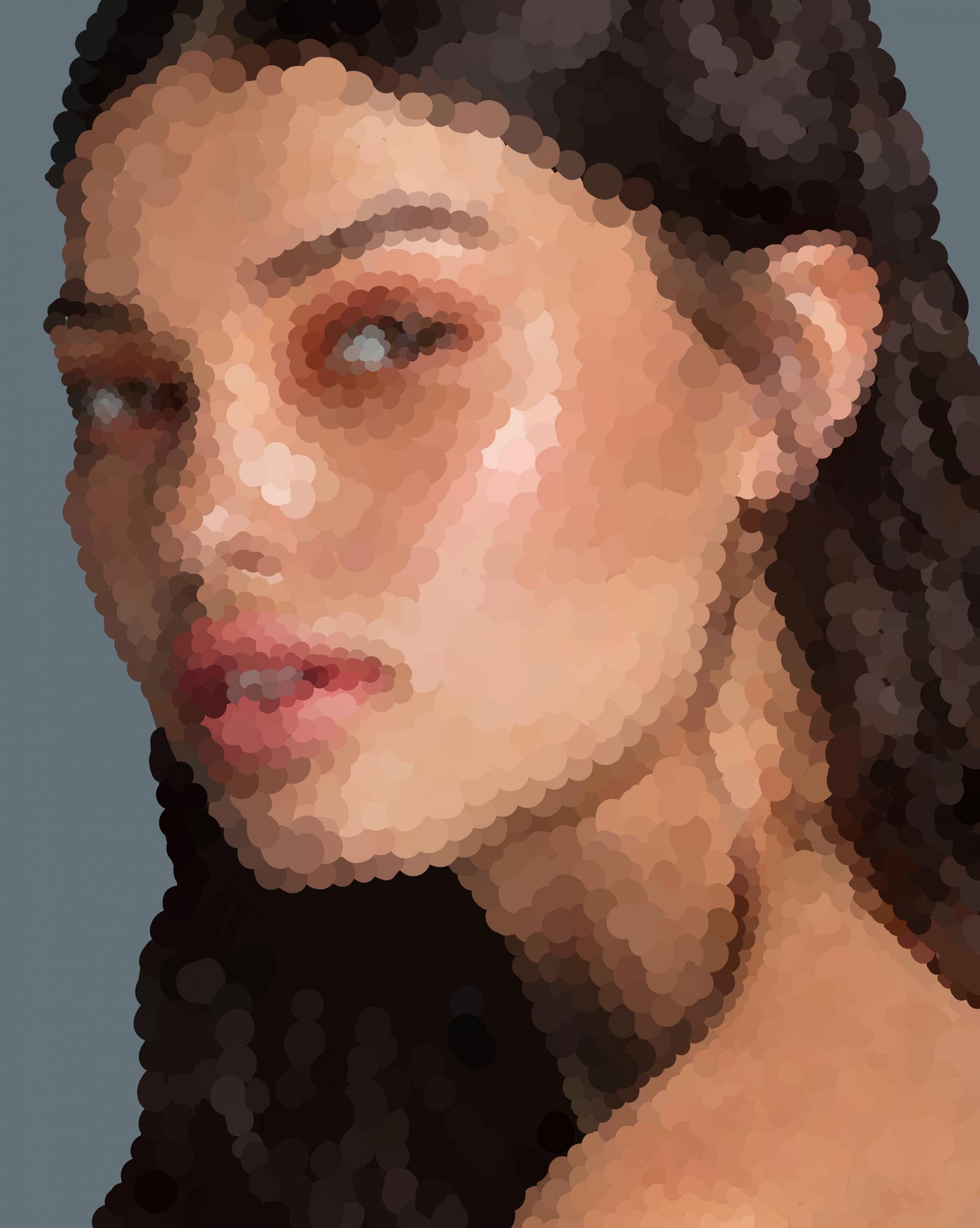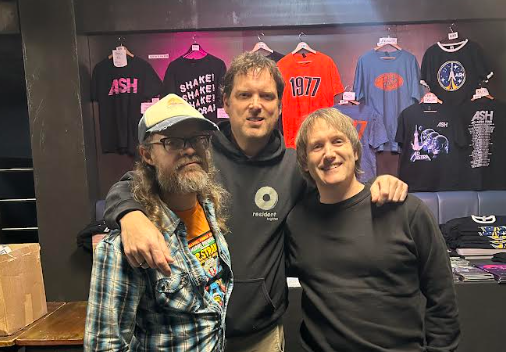By Morgan McGowan
Illustration by Amelia Field
“Sorry, I’m really bad with faces“. We’ve all been there, right? You’re in a meeting, or at a party, or you’ve just bumped into someone in the street, and they’ve struck up a conversation with you. Here’s the problem: you have no idea who they are. Only apparently we haven’t all been there. I was nineteen years old when I figured out that the vast majority of people don’t struggle to recognise people on a daily basis. I have a condition called prosopagnosia, or face blindness. As the name suggests, it means I have difficulty recognising faces. Not just in the usual “I know I recognise you but I can’t remember your name” way or in the “I definitely know you but I’m drawing a blank on how exactly that is” way (I assume this is how ‘normal’ people function), but in the way that I don’t recognise people I’ve seen once a week for over a year in a relatively small group. I’ve even walked past one of my closest friends on the street and failed to recognise them.
It’s a problem.
Shockingly, it turns out that going through life starting a couple of steps behind almost everyone else in social situations makes things difficult. In addition to my terrible face recognition, I also struggle when it comes to judging people’s age, gender, and facial expressions ÔÇö meaning that even if I do recognise someone and remember where I recognise them from, the ensuing conversation can still be extremely stressful. As such, my prosopagnosia is deeply tied in with the social aspect of my anxiety. I go into every social interaction with people I’m supposed to already know secure in the knowledge that not only is it possible that I will fail to recognise them, but that it’s probable. Ironically, this means I’m more comfortable in social situations where I am sure I won’t know anybody. I’m good at public speaking, but bad at group work because only one of those things requires me to be able to pick people out of a crowd.
Currently the only way to get a diagnosis of prosopagnosia is to go through a university. I got my diagnosis through the University of Bournemouth Prosopagnosia Research Group, after having my facial recognition and processing skills tested. I was also screened for indicators that I might be on the autistic spectrum, as one of the things they consider in their research is the fact that many people with autism also have trouble with facial recognition.
The prosopagnosia screening involved taking three tests: the Cambridge Face Memory Test (CFMT), the Cambridge Face Perception Test (CFPT), and the Famous Faces test. The CFMT involves being shown pictures of faces and then having to identify from a gallery whose face was one of the original ones you were shown. In the CFPT you have to order a gallery of faces from most to least similar to a target face. Finally, the Famous Faces test involves being shown pictures of the faces of a number of famous people with their hair and clothing cropped out. For each picture, you have to state whether or not you recognise the person and who you think they are or where you recognise them from. The CFMT and CFPT were particularly stressful for me, as I was very often unable to tell the difference between any of the faces, much less pick one out of a line-up or identify the seemingly infinitesimal differences between them.
So, if I can’t recognise people from their faces, how exactly do I manage on a day-to-day basis? After all, regardless of my capabilities ÔÇö or lack thereof ÔÇö telling people apart and responding appropriately is an important part of life. The short answer is that I train myself to recognise people from other characteristics ÔÇö such as their hair, accent, or another distinctive feature (don’t ask me how I recognise you because I can’t guarantee that you’ll like the answer). The long answer is that it depends on a number of factors. Is this a setting where I would expect to find you? Is there a uniform that’s making it more difficult for me, or any other item of clothing or equipment that could have an impact? Are you someone I see regularly? The more often I see and recognise someone in a familiar context, the easier it becomes for me to recognise them out of context. Have you recently changed something about your appearance? Dyed hair or a different hairstyle plays havoc on my already tenuous face recognition skills. Or maybe I just haven’t seen you in a while. The longer I go without seeing someone the higher the chances are that when I do see them, it’s going to take me longer than usual to recognise them.
The strategies I use to recognise people aren’t the only strategies there are. Other strategies include making notes, familiarising yourself with people on social media to help you recognise them when you meet in person, or relying on friends to remind you who people are. No strategy is 100% effective and most of them can be mentally exhausting, or can rely on things outside your control such as context or the presence of recognisable features.
So, when my strategies for recognising people fail, I have three options. I can either admit that I have no idea who they are, or I can bluff until I figure it out or the conversation ends. The former involves a rather personal and tedious explanation of my prosopagnosia; the latter just means I have to be polite and agreeable whilst desperately wracking my brains for the slightest clue to where I know them from. The third option, of course, is that I don’t notice that someone has recognised me and fail to acknowledge them. This is the least agreeable option. Not only do I lose out on the opportunity to fake a conversation with everything I have, but I also run the risk of being permanently marked down as cold, rude, or simply stuck up.
Usually, I go with option two. It’s easier, and it doesn’t make me look rude or thoughtless. There is one final option I haven’t mentioned; this involves forethought and frankness and it’s something I’m still working on. The final option is the one where I tell people about my prosopagnosia the first time I meet them. It is arguably the best option, but it requires a level of bravery I haven’t quite reached. To do this, not only do I have to be prepared to offer a concise and simple explanation of prosopagnosia, I have to be prepared to field questions and accept the fact that in all probability this will be the first person I am speaking to will have heard of it. There is no singular experience of prosopagnosia. It affects different people in different ways; where I have severe difficulty with face recognition and perception, in others this might extend to objects or could have a much smaller impact on their life. Some people might not even know they have it. My experience is not definitive.
The final thing about prosopagnosia is that there is no treatment. As I said, there are coping mechanisms and compensatory strategies which vary from person to person and are not 100% effective. While there are research studies currently taking place which look into the effect of brain training exercises focusing on facial recognition, as well as ongoing research into pharmaceutical intervention, there is no treatment. Prosopagnosia is something I will have to continue to live with. I use my strategies, and I work towards being able to talk about them when I first meet people. The more widespread knowledge and understanding there is of face blindness, the more acceptable it will be for me to admit to simply not recognising people. And if what it takes for us to get to that place is me and others with an understanding of prosopagnosia to talk about it more, then that’s what I’ll do. It’s what I’m doing.



